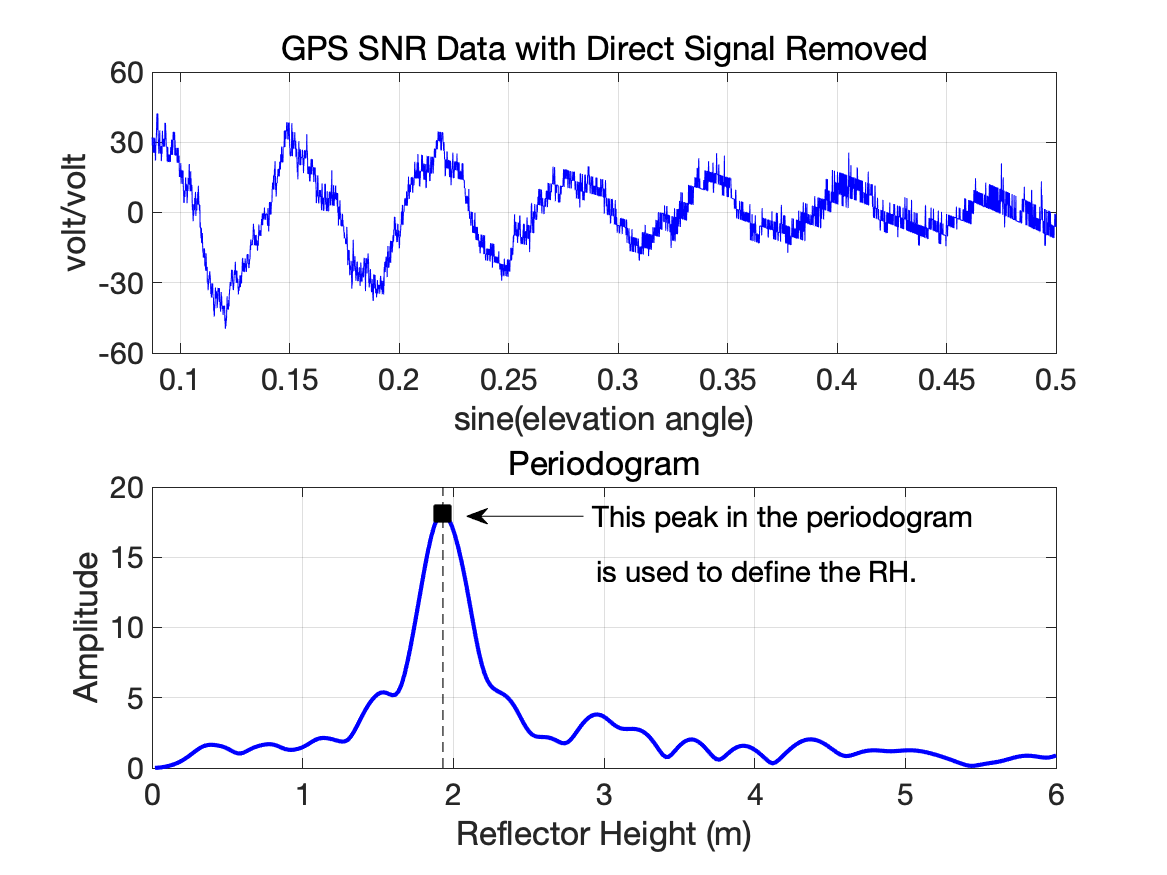GNSS Interferometric Reflectometry
|
|
|
We removed the GNSS-IR API that supported the display of real-time examples. Instead, we recommend
you read some of the examples we
developed for the gnssrefl software. If an organization would like to host the
GNSS-IR API, I am willing to bring it back to life - just contact me.
|
|
GNSS-IR measures the vertical distance (or reflector height RH) between the GNSS antenna phase center and the horizontal surface (snow, water, soil moisture, soil) below the antenna. If you are familiar with the method and want to try out the technique at different places, choose one of the sites in examples above. The main idea behind the GNSS-IR technique is shown for a single GNSS signal. If a surface below a GNSS antenna is fairly planar(smooth), the reflected signal will be observed by the GNSS system. This effect is especially prominent at low satellite elevation angles. Each rising or setting satellite arc can potentially be used, which allows subdaily RH to be estimated if desired.

The direct signal (blue) interferes with the reflected signal (red) creating interference patterns that change over time. It is these changes (constructive and destructive) in the interference pattern that are used to estimate the Reflector Height (RH). Sample interference patterns are provided in the center of the figure. What do the data look like? Below we highlight the raw SNR observation data for a single satellite rising arc at a typical geodetic station in Boulder Colorado ( p041). The units of the Signal to Noise Ratio (SNR) data have been changed from their native db-Hz values to a linear scale (volts/volts) and detrended, leaving only the decaying sinusoid. It is the frequency of that decaying sinusoid we want, because it tells us the Reflector Height.

You can extract the frequency of this sinusoid using a variety of techniques, but what we have done is use the Lomb Scargle Periodogram. This technique is mainly used when the observations are not evenly sampled. Please see the gnssrefl software for more information. |